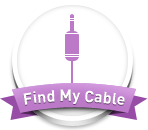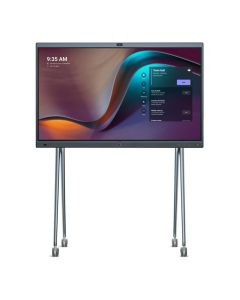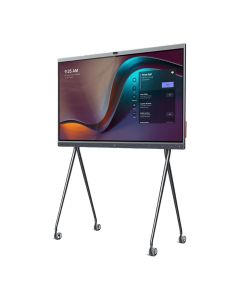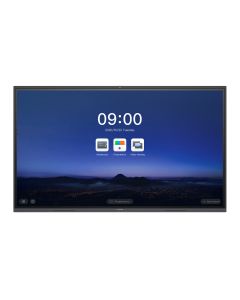

Searching for compatible lifters/electronic hookswitches...
Video Displays and Touchscreens
Elevate your video conferencing experience with our high-quality displays and touchscreens. Designed for seamless integration with video conferencing systems, our displays deliver crisp and vibrant visuals, while touchscreens offer intuitive control and collaboration. Explore our range of meeting room kits, all-in-one videobars, webcams, and speakerphones to enhance your setup. Upgrade your video conferencing experience with our top-of-the-line displays and touchscreens.
-
- 4K60Hz Ultra-HD clarity
- Unified Yealink dual-screen integration
- Intuitive touch with low latency

-
- WIFI6 wireless presentation
- Wireless BYOD*
- Windows OPS Module*
- Upgradeable Android OPS Module

-
- Easily deploy MS Teams or Zoom Rooms
- Touch screen collaboration tools
- Flexible and suits 90% of meeting rooms
- Wireless BYOD and Microphone options

-
RRP: $3,800Now: $3,423 inc GSTNow:
$3,423 Inc GST Save: $377- 4K UHD Display
- Infrared Touch with 20 PoT
- 12MP Full HD, 6 Element Mic Array
- OPS Slot to Support WIN / Android PC Module
What are the different types of displays and touchscreens available for work-related applications?
There are several types of displays and touchscreens commonly used in work-related applications:
- LED Displays: LED (Light Emitting Diode) displays offer vibrant colours, high contrast ratios, and energy efficiency, making them suitable for various work environments.
- LCD Displays: LCD (Liquid Crystal Display) screens provide excellent image quality and are commonly used in laptops, desktop monitors, and digital signage.
- Interactive Touchscreens: Interactive touchscreens allow users to interact directly with the display by touching or gesturing, enabling collaborative activities such as presentations and brainstorming.
- Multi-Touch Displays: Multi-touch displays recognise multiple touch points simultaneously, enabling gestures like pinch-to-zoom and swipe, enhancing productivity and interactivity.
- IPS Displays: IPS (In-Plane Switching) displays offer wide viewing angles and accurate color reproduction, making them suitable for tasks that require colour accuracy and consistent image quality.
What are the benefits of using displays and touchscreens in work environments?
Displays and touchscreens offer several benefits for work-related applications:
- Enhanced Visual Experience: High-quality displays provide clear, sharp images, ensuring that visual content is presented accurately and effectively.
- Improved Collaboration: Touchscreens enable interactive collaboration, allowing users to annotate, draw, and interact with content during meetings and presentations.
- Increased Productivity: Larger displays and touchscreens offer more screen real estate, enabling users to multitask and work more efficiently.
- Easy Information Sharing: Touchscreens make it easy to share information, annotations, and notes during meetings, fostering better communication and understanding.
- Effortless Navigation: Touchscreen displays provide intuitive navigation, allowing users to quickly access applications, files, and content with simple gestures.
- Flexible Workspaces: Touchscreen displays offer flexibility in workspace design, enabling users to interact with technology in a way that best suits their needs and work style.
What factors should I consider when choosing displays and touchscreens for my work environment?
When choosing displays and touchscreens for your work environment, consider the following factors:
- Display Size: Determine the appropriate display size based on the viewing distance and the content you'll be working with.
- Resolution: Higher resolution displays provide sharper and more detailed images, especially important for tasks that require precise visuals.
- Touchscreen Technology: Choose a touchscreen technology that suits your needs, such as resistive, capacitive, or infrared touchscreens.
- Connectivity Options: Ensure that the display or touchscreen has the necessary ports and connectivity options to integrate with your existing devices and systems.
- Ergonomics: Consider factors like adjustable stand height, tilt, and swivel options to ensure optimal viewing and comfortable interaction.
- Compatibility: Verify compatibility with your operating system and software applications to ensure seamless integration and functionality.
Can displays and touchscreens be used in different work environments?
Yes, displays and touchscreens can be used in various work environments, including:
- Office Spaces: Displays and touchscreens enhance productivity and collaboration in office environments, facilitating tasks such as presentations, data analysis, and creative work.
- Conference Rooms: Large displays and interactive touchscreens are ideal for conference rooms, enabling effective communication, brainstorming, and collaboration.
- Education Settings: Touchscreens are commonly used in educational institutions to promote interactive learning, engage students, and facilitate classroom activities.
- Healthcare Facilities: Touchscreens are valuable in healthcare settings for digital recordkeeping, patient education, and accessing medical information.
- Retail and Hospitality: Touchscreen displays are used in point-of-sale systems, self-service kiosks, and digital signage for customer engagement and seamless transactions.
Are displays and touchscreens easy to set up and use?
Yes, displays and touchscreens are generally easy to set up and use. They typically come with user-friendly interfaces and intuitive controls. However, it's important to read the manufacturer's instructions and guidelines to ensure proper installation and configuration. Additionally, familiarising yourself with the features and functionality of the specific display or touchscreen will help you make the most of its capabilities.















